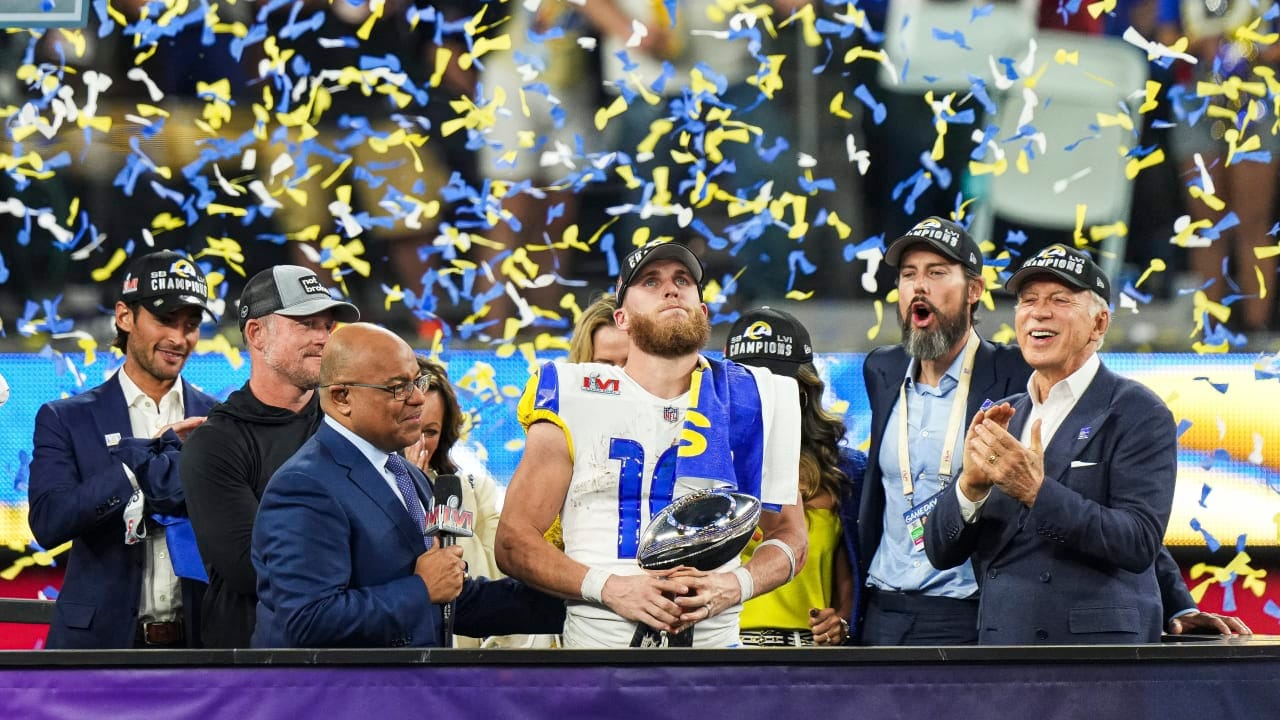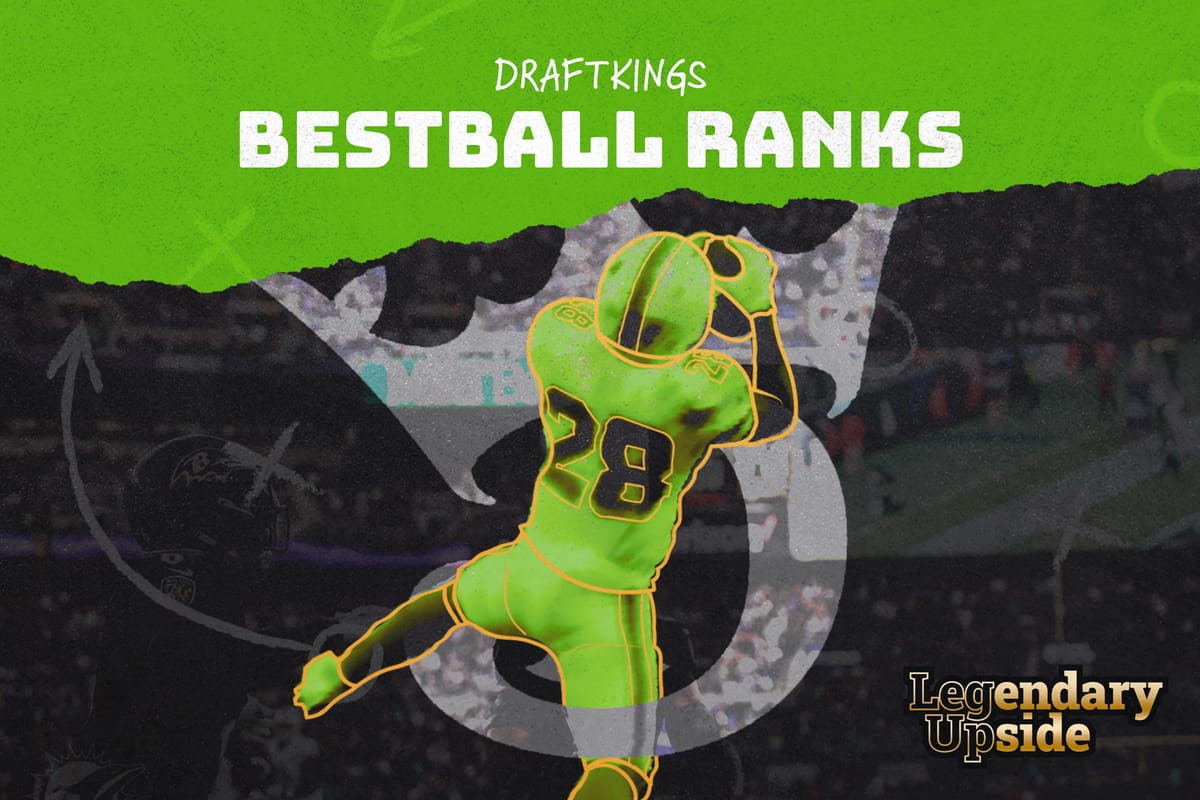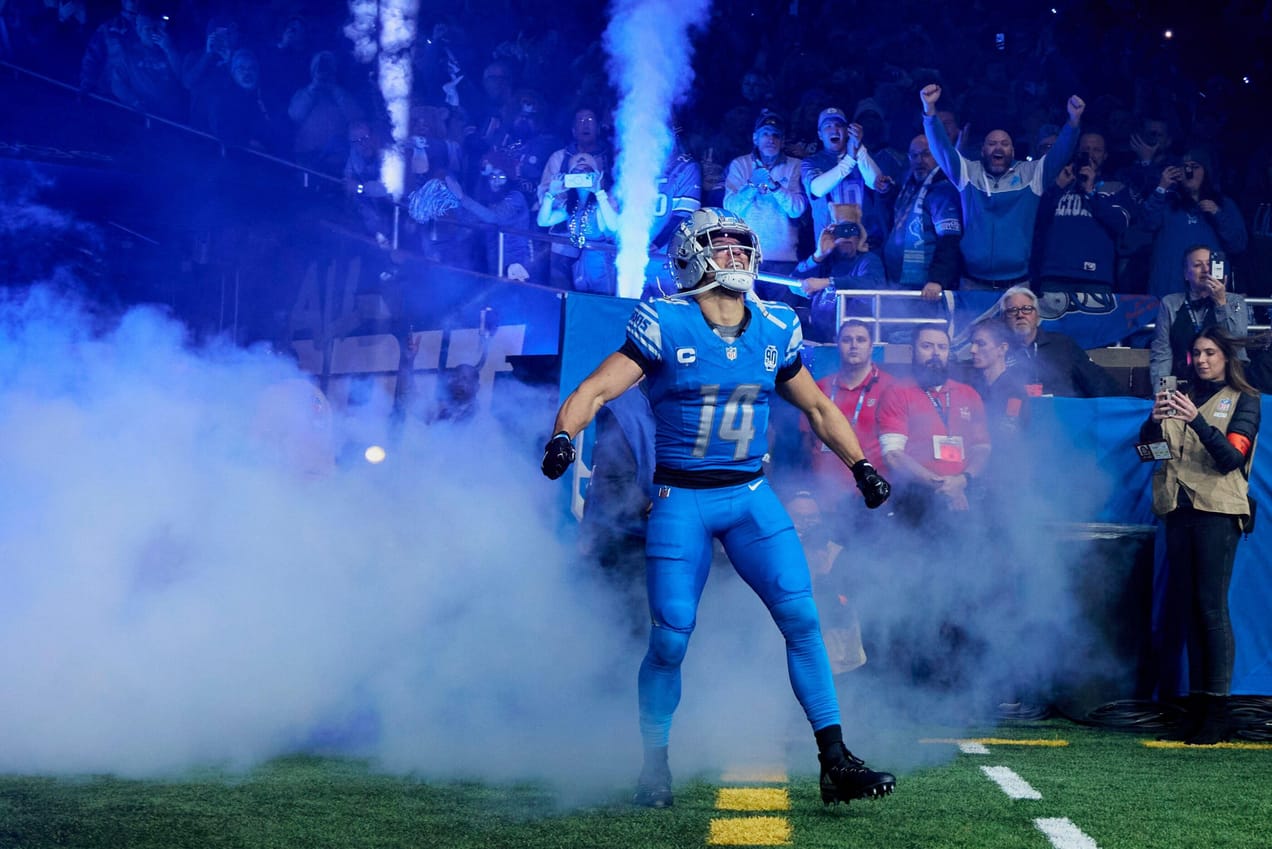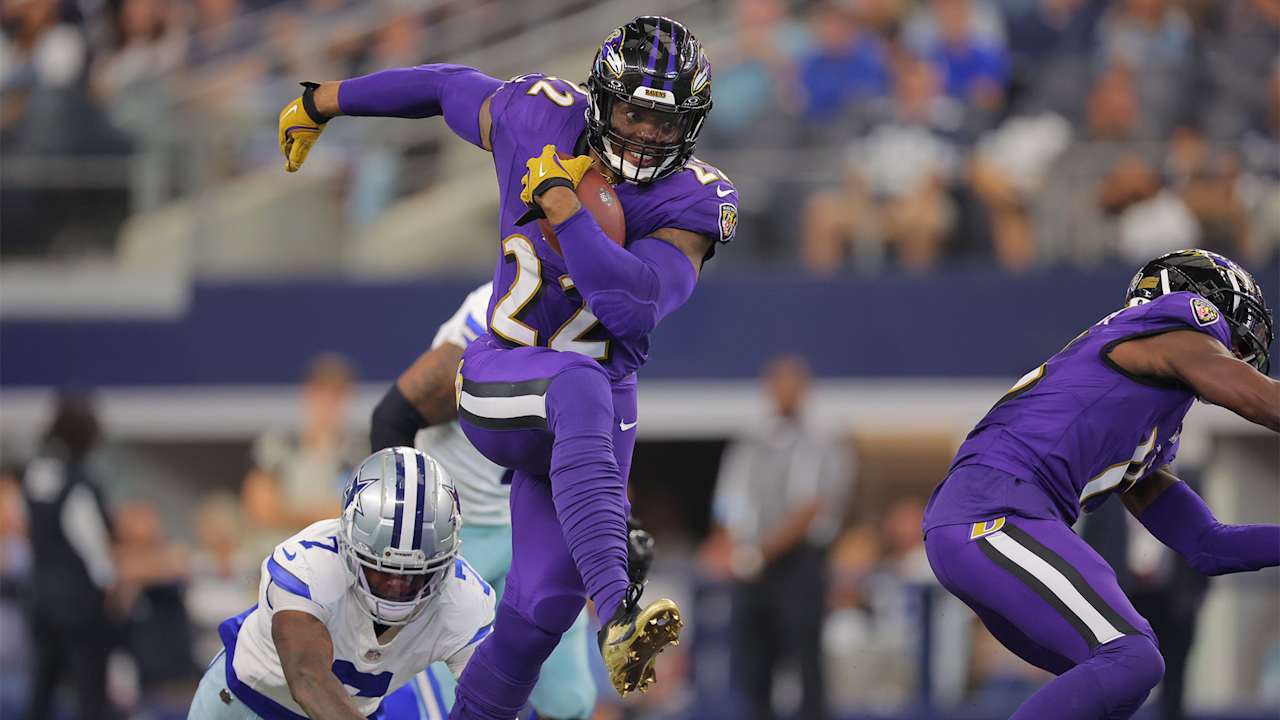
Hunting for Mid-Round WR Breakouts: Four Breakout Factors
Successfully finding mid-round WR breakouts is one of the simplest ways to win a fantasy league. Over the years, we've had true league-winning breakouts from WRs going in the mid rounds—Stefon Diggs' 2020 and Cooper Kupp's 2021 being he most recent. We've also seen seasons that were less earth-shattering but still very nice to have.
To help dial in the mid-round WR breakout profile, I went back to 2018 and looked WRs being drafted in Rounds 4 through 6 who went on to score at least 16 PPR points per game, with at least a 12% best ball win rate. For this analysis, I also limited the WR hits to Years 1-6. The goal here is to look at ascending WR talents, which tend to be priced differently from WRs already producing at a high level or aging stars.
Here's the list:

In some ways, every WR breakout is a special little flower; no two are exactly alike. But I wanted to see if I could identify some commonalities, some breakout factors, that would help us predict 2025's must-have mid-round WRs.
I found four.
Becoming a Higher Priority Target
Wide receivers earn targets... right?
Yes.
... but when?
Unlike RBs, WRs don't just get handed the ball. They have to run a route and get open. And they also need their QB to be looking at them when that happens. WRs earn targets by executing on a given play. But they also earn targets days and weeks in advance, when the offense is being designed and tweaked, game plans are being devised, and plays are being installed.
When looking at Calvin Ridley's 2020, Cooper Kupp's 2021, and Amon-Ra St. Brown's 2022, the biggest thing that jumps out is that their first-read target rates jumped from solid, respectable marks to dominant ones.
In 2019, Ridley saw a first read target on 16% of his routes; in 2020, he jumped to 22%. For reference, in 2024, he would have matched Mike Evans.
In 2021, Amon-Ra St. Brown saw a target on 17% of his routes; in 2022, he jumped to 23%. Last year, he would have been just behind Malik Nabers.
In 2020, Cooper Kupp saw a first read target on 18% of his routes; in 2021, he jumped to 24%. Last year, he would have matched Puka Nacua and trailed only Drake London.
As Mat Irby recently put it, being prioritized in an offense, as it turns out, may be meaningful.
But not every WR saw this kind of boost.
Chris Godwin's first read target rate actually fell from 18% to 15% in his breakout year. D.J. Moore dropped from 18% to 16%, Stefon Diggs dropped from 20% to 19%, Terry McLaurin dropped from 16% to 15%, and DK Metcalf stayed flat at 15%.
But the other five veteran WRs saw an increase of at least 3%, with an average increase of 2% across the entire breakout group. And all 11 breakouts had at least a 15% first read target rate in their breakout seasons.
It's also notable that all 10 veteran breakouts had at least a 13% first read target rate in their previous season. These were WRs who were working from a strong base within their offense, even if they didn't go on to utterly dominate targets in the following season.
There's another interesting wrinkle here. When looking at the five veteran WRs who saw their first reads spike, they had a better YPRR than you'd expect for their first read target rate before their breakout year.
In other words, these WRs were overperforming their roles in the offense prior to breaking out. All five of these WRs then remained on the same team with the same head coaches. These five WRs earned bigger roles with strong play, and given an offseason to prepare, their coaches prioritized them.
More Route Volume
This one is pretty obvious. If a WR runs more routes, they're liable to score more fantasy points.
Still, this was a major driver for most of the WRs on the list. Amon-Ra St. Brown, Calvin Ridley, and Terry McLaurin all saw their routes per game decrease in their breakout seasons. But every other veteran WR saw at least a 10% increase in their routes per game. On average, the breakouts saw an increase of five routes per game.
For JuJu Smith-Schuster (2018), Chris Godwin (2019), and Stefon Diggs (2020), the increased route volume was transformative.
Smith-Schuster went from decent 84% route participation in his rookie season to an elite 94% mark in his second season. This coincided with the Steelers jumping from 39 dropbacks per game to 45 dropbacks per game. Both seasons were with Ben Roethlisberger at QB, but in 2017, the Steelers had Todd Haley at offensive coordinator. The passing explosion was coordinated by Randy Fichtner, who prioritized Smith-Schuster in more ways than one. In 2018, Smith-Schuster also saw his first-read target rate jump from 13% to 16%.
In 2018, Chris Godwin was a part-time player, with just 62% route participation and 28 routes per game. The Buccaneers were passing quite a bit, with 45 dropbacks per game, but Godwin just wasn't out there enough. The following year, he spiked to 95% route participation and 43 routes per game. The Bucs passed a lot again, but in the 14 games Godwin played, they matched their 2018 rate, with 45 dropbacks per game.
In 2019, Stefon Diggs posted 88% route participation. In 2020, he jumped to 94%. More importantly, he moved from a Vikings team that averaged pm;y 32 dropbacks per game to a Bills team that averaged 41. The end result was him adding 11 more routes per game, jumping from 28 in 2019 to 39 in 2020. Diggs' YPPR was damn near identical in both seasons—2.50 with the Vikings and 2.49 with the Bills. And he saw his first read target rate dip by 1% on his new team. But being able to maintain elite efficiency on elite volume is very much a skill, one that Diggs and Josh Allen simultaneously proved.
Increased route volume was also a major factor for DK Metcalf, who jumped from 34 routes per game to 39 in his second season, and from 88% route participation to 95%. Metcalf's targets per route run and YPT increased slightly, but volume was the bigger factor, as he ran routes at a higher rate while the Seahawks also increased their dropbacks from 38 to 42 per game.
Volume also played a major role for Tee Higgins last year, who jumped from 33 to 37 routes per game, as part of a Bengals offense that was able to keep the pedal to the floor with Joe Burrow healthy. Higgins was also a much bigger factor in the offense, seeing his first read target rate jump from 17% to 20% and his targets per route run from 19% to 23%. This bigger role led to a jump in YPRR from 1.66 to 2.05, despite a small decline in his YPT from 8.9 to 8.8. In other words, Higgins' breakout last year was driven by a combination of route volume and the ability to convert that raw opportunity into targets, ra ther than more efficient per-target play.
Upgraded QB Play
If a WR is looking to become a much higher priority target within their offense, it's probably better to have a stable environment. It's helpful to have coaches who know what a player can do, and for a player to be familiar with the intricate details of an offensive system.
But dramatic change can unlock breakouts as well.
When looking at Terry McLaurin's 2024, D.J. Moore's 2023, or Chris Godwin's 2019, we see efficiency spikes that are hard to explain by the players' roles within their offenses.
Godwin's first read target rate actually declined from 18% to 15% and his TPRR dropped from 20% to 19%. Sure, much of his production was driven by increased playing time, but we also have to address the fact that he spiked from 1.87 YPRR in 2018 to 2.24 in 2019.
Godwin's efficiency was driven by an 11.7 yards per target, well above his 9.4 mark in 2018. In his case, we can attribute this to a healthy season from Jameis Winston and Bruce Arians, who took over from Dirk Koetter in 2019. Arians was instrumental in making Godwin a full-time player, but he also helped implement a much more efficient passing offense by letting Jameis Winston do his thing—no risk it, no biscuit.
D.J. Moore moved from the simultaneous rock bottoming of Sam Darnold and Baker Mayfield to pre-rock-bottom Justin Fields, spiking from 1.74 YPRR to 2.34. But his first read target rate declined from 18% to 16%, with his TPRR only slightly increasing from 21% to 22%. The two big drivers were more routes per game—30 in 2022 to 35 in 2023—and Moore's YPT jumping from 8.1 to 10.3. The Fields/Moore connection was inconsistent, but when it was clicking, it was really clicking. Moore peaked with an 8/230/3 receiving line.
Terry McLaurin went from putting up 1.56 YPRR in yet another season in QB purgatory to 1.97 with rookie Jayden Daniels. McLaurin actually lost four routes per game—losing Eric Bieniemy will do that. His first read target rate also declined from 16% to 15% and he held steady at just a 20% TPRR. But with significantly improved QB play, McLaurin jumped from a 7.8 YPT to 9.7.
Cooper Kupp became the engine of the Rams' offense in 2021, which drove his breakout, but when you put up 26 PPR points per game, generally, more than one thing has gone right. Kupp also added three routes per game as part of an offense that replaced Jared Goff with Matthew Stafford. The Kupp/Stafford connection quickly became one of the most celebrated in the league, with Kupp's TPRR jumping from 23% to 30%. But his YPT also spiked dramatically from 8.3 to 10.5, leading to a ridiculous YPRR increase of 1.95 to 3.12.
Undervalued TD Equity
When looking at the 11 breakout seasons, nine of them scored at least eight TDs, with five of them (including rookie Ja'Marr Chase) hitting 10+. None had fewer than six.
When looking at the 10 NFL seasons that preceded those breakouts, none of these WRs hit 8+ TDs. Four of them had fewer than six, with Tee Higgins and Amon-Ra St. Brown at five, Terry McLaurin at four, and Cooper Kupp at just three.
Juju Smith-Schuster was the only player not to increase his TD total, holding steady at seven in both seasons.
So pretty clearly, TD scoring is important. But equally, TD variance is important.
These players were priced in the mid rounds, and it's hard not to wonder how much lackluster TD totals contributed to their underpriced ADPs heading into their breakout seasons.
If a WR costs a mid-round pick and otherwise looks like a strong breakout bet, their "ability" to score TDs is probably already being counted against them. It's likely contributing to them being in the mid rounds to begin with. Fading them for a weak TD scoring resume looks like a potentially devastating mistake.
Different Paths to Stardom
Looking at the four factors above, it's clear that we don't need future WRs to check every box.
TD scoring is the only box that every WR came close to checking in their breakout seasons. TD scoring is pretty important in fantasy, but not every breakout was a prolific TD scorer.
Instead, every veteran WR checked a different box—unimpressive TD scoring in their previous season. This makes sense; it's one of the easiest ways for a WR to be drafted below where his talent dictates. However, even this doesn't look like a must going forward—if a WR scored 10 TDs and then was being heavily discounted for some other reason... I would not want to write them off as a potential breakout, obviously.
On TDs, my takeaway is that TDs are hard to predict, and we should buy otherwise talented WRs who are "bad" at scoring TDs.
The other three factors—increased target priority, increased route volume, and upgraded QB play—can work in combination, but each appears to provide a potential path to stardom on its own or in tandem, rather than serving as a box that must be checked.
Investigating 2025's Potential Breakouts
Breakout factors are cool and all, but what's the point if we can't use them to predict future breakouts?
Over the coming days, I'll be profiling the following WRs, analyzing their chances of becoming 2025's league-winning breakout WR.
- Xavier Worthy and Rashee Rice
- Jameson Williams
- George Pickens
- DeVonta Smith
- Jaylen Waddle
- Zay Flowers
- Rome Odunze
- Chris Olave
- Ricky Pearsall and Jauan Jennings
- Jordan Addison
- Jerry Jeudy
Tetairoa McMillan and Travis Hunter are both rookies, and in my view, are both strong picks. But without an NFL sample to examine, I won't be covering them in this series. If you're interested in my thoughts on each, I profile them both here.
First up for the veterans: Zay Flowers. That profile drops tomorrow.






